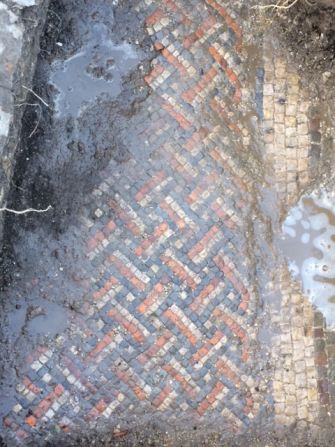
A grand Roman villa complex, undisturbed for more than 1,500 years, has been discovered on the grounds of a UK farmhouse after earthworks uncovered a well-preserved mosaic.

Luke Irwin, a British rug designer, said he had hired workmen to lay underground electricity cables to an old barn on his property in Brixton Deverill, about 32 kilometers (20 miles) southeast of the former Roman spa town of Bath, last year.

About 18 inches below the topsoil, they struck a hard surface of orange, cream and gray mosaic tiles.

Realizing the likely significance of a mosaic beneath the ground in a remote field, Irwin told the workmen to stop what they were doing and called in the archaeologists instead.

Other artifacts found nearby included a bath house, a well, pottery and coins.

Discarded oyster shells were also discovered that the ancient inhabitants would have dined on.

They also determined that a stone planter near the Irwin's kitchen that had been used to house geraniums was actually originally the coffin of a Roman child.

It is believed the three-story villa, with a footprint of at least 50 meters by 50 meters, would have belonged to a wealthy and powerful family. Archaeologists have compared it in scale and significance to Chedworth, a Roman villa discovered in 1864.

Irwin said the plan for the site was not yet clear, but he hoped it would be given the proper excavation it deserved.